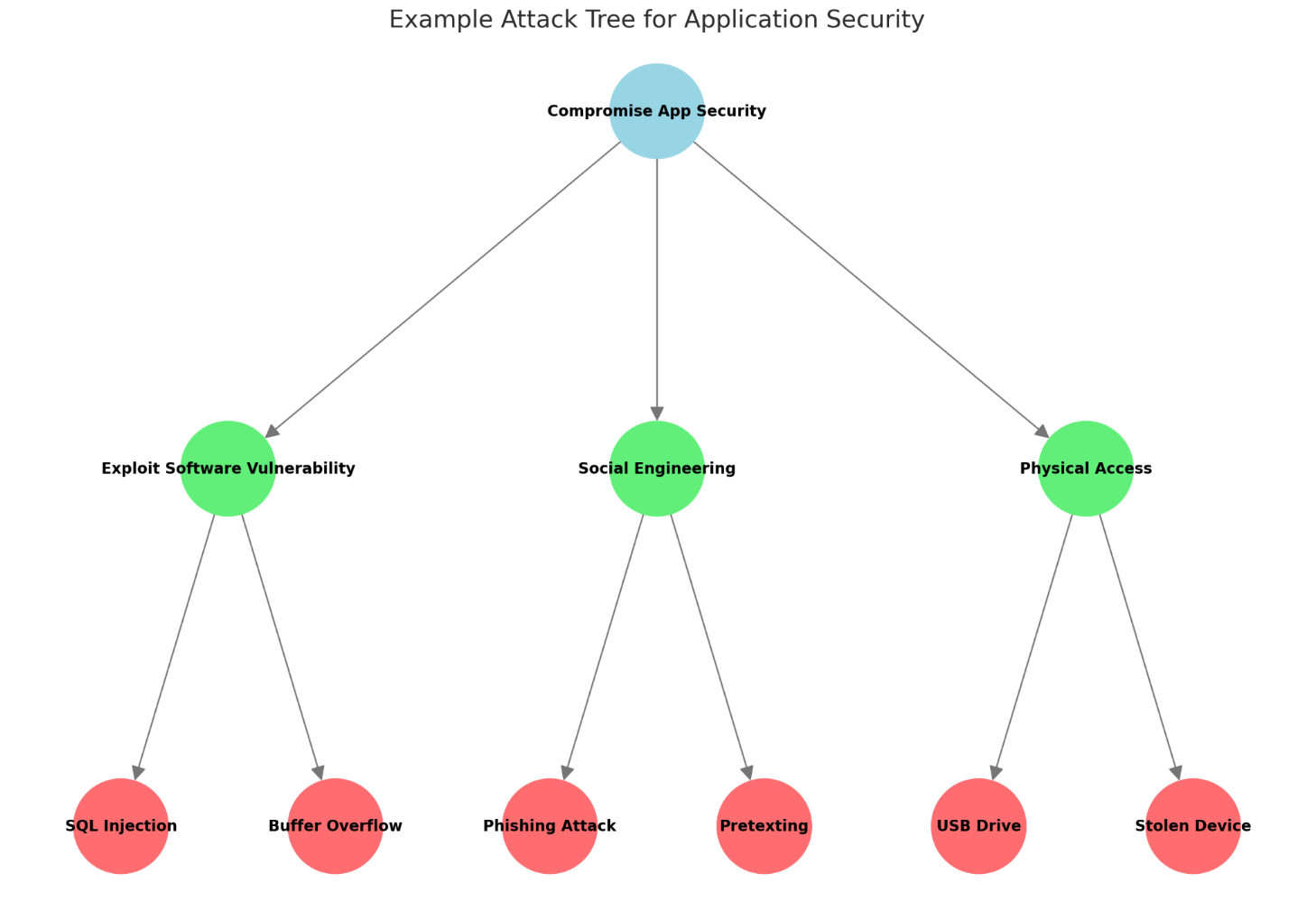Threat Modeling: Attack Tree Example
Using attack trees as part of a threat model - Image created with help from ChatGPT
Root Goal:
Gain Unauthorized Access to User Bank Accounts
Level 1 (Branch Nodes): High-Level Methods
Exploit Application Vulnerabilities
Social Engineering
Compromise User Devices
Level 2 (Sub-Branch Nodes): Specific Strategies or Vulnerabilities
Exploit Application Vulnerabilities
SQL Injection to access the database
Cross-Site Scripting (XSS) to steal session cookies
Cross-Site Request Forgery (CSRF) to perform unauthorized transactions
Social Engineering
Phishing emails to steal login credentials
Impersonation calls to customer support to reset user passwords
Fake banking websites to capture user login information
Compromise User Devices
Malware to log keystrokes (keyloggers)
Man-in-the-Middle (MitM) attacks on insecure networks
Exploiting vulnerabilities in the user's device operating system
Level 3 (Leaf Nodes): Specific Actions or Conditions
SQL Injection
Identify input fields that are not sanitized
Craft SQL queries to inject via user input fields
Phishing Emails
Design convincing emails mimicking bank communication
Include links to fake banking login pages
Malware (Keyloggers)
Develop or acquire a keylogging tool
Distribute the malware via email attachments or malicious websites
Using the Attack Tree in Threat Modeling
Identify Vulnerabilities: The attack tree helps pinpoint specific vulnerabilities, such as unsanitized input fields (for SQL Injection) or the lack of email filtering and awareness (for Phishing).
Assess Risks: Each branch and leaf node can be assessed for likelihood and impact, allowing the team to prioritize risks. For example, SQL Injection might be deemed high risk if the application relies heavily on dynamic SQL queries without proper input validation.
Develop Mitigation Strategies: Based on the identified risks, the team can propose countermeasures. For SQL Injection, this might include implementing prepared statements and input validation. For Phishing, measures could include employee awareness training and improved email filtering.
Review and Update Security Measures: The attack tree also highlights areas for potential security improvements, such as implementing multi-factor authentication (MFA) to mitigate the risk of unauthorized access even if login credentials are compromised.
Conclusion
In this threat modeling session, the attack tree provided a structured way to explore and document potential threats to the online banking application. It facilitated a comprehensive analysis of how an attacker could gain unauthorized access to user accounts, guiding the team in prioritizing and addressing vulnerabilities effectively.

